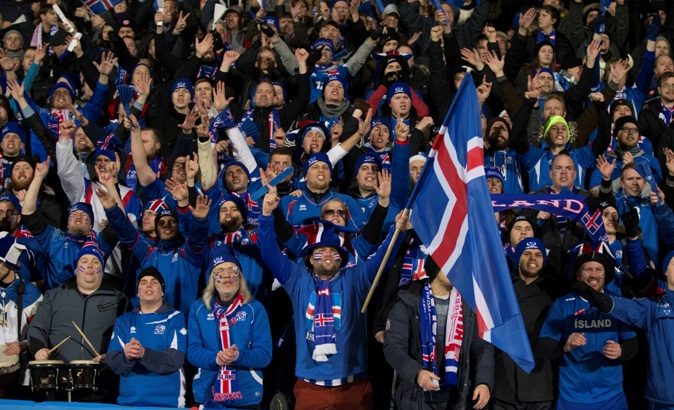It was quite surreal at first, having 24 hour daylight, but that’s just how it is there during the summer months. The sun would simply drop down to the horizon (blanketing us in stages of orange, red and pink), linger there for around twenty minutes and then ascend for the second dawn of the day. Things like that really mess with your head. We have our European preconceptions about how each day should be structured, but Iceland is really something quite different. It’s one of the most fascinating countries in the world. They have glaciers, magical green lights, no army (why need one?), and a happy population. The people denounced McDonald’s for its corporate evil and live long, pure lives, with a diet of local water, fresh air and protein. [READ MORE]
European clubs favor Icelandic players because they are the perfect ‘type’. They’re powerfully built with stamina in abundance. They aren’t pretentious like many modern footballers and apply themselves professionally. Although it doesn’t always work out: Victor Pálsson at Liverpool, Jóhann Guðmundsson at Chelsea, Hörður Magnússon at Juventus (despite currently being on loan) there are examples where expectations are surpassed: Kolbeinn Sigþórsson at Ajax, Alfreð Finnbogason at Heerenveen and Eidur Gudjohnsen absolutely everywhere he’s ever been. The level of investment in the soccer is increasing and I was surprised when I was there at how many soccer pitches there actually are. Along the grass-backed roads from town to town are 3G pitches with kids playing soccer. I don’t know what it must be like during the winter months when its dark for 24 hours and the pitches are coated in snow, but certainly there are more multi-weather pitches in the Reykjavik area than there probably are in many major UK cities.
This is of course an issue. The world’s greatest players tend to be South American or Southern European where weather isn’t a barrier to participation. To harness their technique Icelandic youngsters need to be able to continually play, so it’s fantastic for the long-term that investment has been made into facilities.
In regards to the short-term, things aren’t going too badly either. The historic win over the Netherlands on Monday night offers testament to how far the nation has come. Goal scorer Gylfi Sigurdsson labelled the result as ‘perfect’ and it sees Iceland rise to the forefront of this round of European Championship qualifiers; which follows three straight victories so far. The result has also rubber stamped a fine three years for the emerging nation, which almost included qualification for the 2014 FIFA World Cup.
They have never managed to qualify for a major soccer tournament, having only seen an upturn in fortunes at the turn of this millennium. They attempted to qualify for the World Cup in 1958 in Sweden but after four games, four defeats and twenty six goals conceded the dream of crossing the Norwegian Sea and rubbing shoulders with the likes of Pele’s Brazil came to nothing. This trend continued as Iceland struggled to make an impact on a qualification campaign; that was until the recent journey began to qualify for Brazil 2014.
